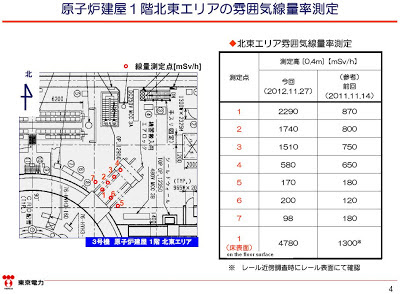The Japanese love hopium, and no amount of radioactive cesium would change that.
What kind of hopium this time? Bright future for Japan of course.
What future? you may ask. Let's see...
「卒原発(脱原発)」 - graduate from nuclear power
「活女性、こども」 - happy women and children
「守暮らし」 - protect people's living
「脱増税」 - move away from tax increase
「脱官僚」 - move away from bureaucrats
「誇外交」 - proud foreign policy
What are they? They are the 6 key policies of the new party headed by the female governor of Shiga Prefecture (pictured below, right) which have been rapidly joined by just about every minor political parties except for Japan Communist Party, Social Democratic Party, and New Japan.

If you read Japanese, you see that they use a peculiar way of creating the word. It's almost like the word order for Chinese. I don't even know how to pronounce the second, third, and sixth policies. (Boy do I smell a PR agency...)
Even Mr. Ozawa's party, People's Living First Party, have quickly dissolved itself and eagerly joined Ms. Yukiko Kada's new party, named "日本未来の党" (Japan's Future Party; my translation not their official English name).
Japan's Future Party. For the future where everyone will be able to have hope. (So says the card Ms. Kada is holding in the photo above.)
With less than 3 weeks to the election, politicians have been scrambling to get organized and get some traction with the voters. Almost all of them were caught off guard by Prime Minister Noda's declaration on November 14 that he would dissolve the Lower House and call the election on December 16, one-year anniversary of his declaration of "cold shutdown state".
I don't know anything about Ms. Kada, other than she was a scholar and university researcher before she became the governor of Shiga Prefecture in western Japan (Kansai region). In the news earlier this year, she made a minor news headline when she said she had had no choice but to say yes to the restart of Ooi Nuclear Power Plant because of the pressure from local businesses in Shiga Prefecture who were afraid of potential damage from the rolling blackout.
When I first saw her photo, I thought she was the mayor of Yokohama City who couldn't pass up a bargain of cheap domestic beef after March 11, 2011 and kept feeding school children with her bargain meat. That's not a very good association, but that's what I thought on seeing the photo.
Anti-nuclear people, particularly women, are excited. Now there is an anti-nuclear, "third" party! instead of the boy-wonder's party (the boy-wonder did suddenly declare he was for moving away from nuclear power). And it's headed by a woman! Future, the bright future!
So they dream on, gazing into distance expectantly (just like Panasonic's homepage photo), while ignoring things like:
Highly contaminated dirt on the roadside in Kanto and Tohoku;
Food contaminated with radioactive cesium sold all over Japan;
Refugees from the nuclear accident still living in an abandoned high school building more than 20 months after the accident;
Fukushima I Nuke Plant workers continue to get exposed to high radiation, with low pay and no benefit and no free cancer checkups;
Fukushima I Nuke Plant accident is not "over"; and politically
Ms. Kada has been an ally of the boy-wonder mayor of Osaka City;
Her party's deputy president will be Tetsunari Iida, who was an advisor to the boy-wonder and who ran for the governorship in Yamaguchi and utterly failed.
Reality? What is that? Reality-based world is so passe and boring, too many details, too much information!
I am disappointed that Mr. Ozawa throws his party behind the dreamy future with this new party without first addressing any of the problems caused by the nuclear accident (and to an equal degree, by the earthquake and tsunami), particularly when it was Mr. Ozawa who had declared that stopping radioactive materials coming out of Fukushima I Nuclear Power Plant and ending the nuclear accident was the first and foremost priority for Japan as a nation, and until that was done, there would be no future for Japan.
Well, he caved, it seems. Ms. Kada says Mr. Ozawa will have no official role in her new party.
Dream on, Japan, as that seems to be about the only thing you can handle.
===========================
I'm reading the details of the six core policies of Japan's Future Party, and I don't think I like the details which include:
Create the Japanese version of NSC (National Security Council) against terrorism;
Actively promote free-trade associations;
Delegate local control of the national government to [unelected] supra-regional political unions [like the one in Kansai]
312,000 yen per year subsidy per child [and where does that money come from?]
Their energy policy is nothing but what Mr. Iida has been promoting.





 Tokyo Time
Tokyo Time
![[Most Recent Quotes from www.kitco.com]](http://www.kitconet.com/charts/metals/gold/t24_au_en_usoz_2.gif)

